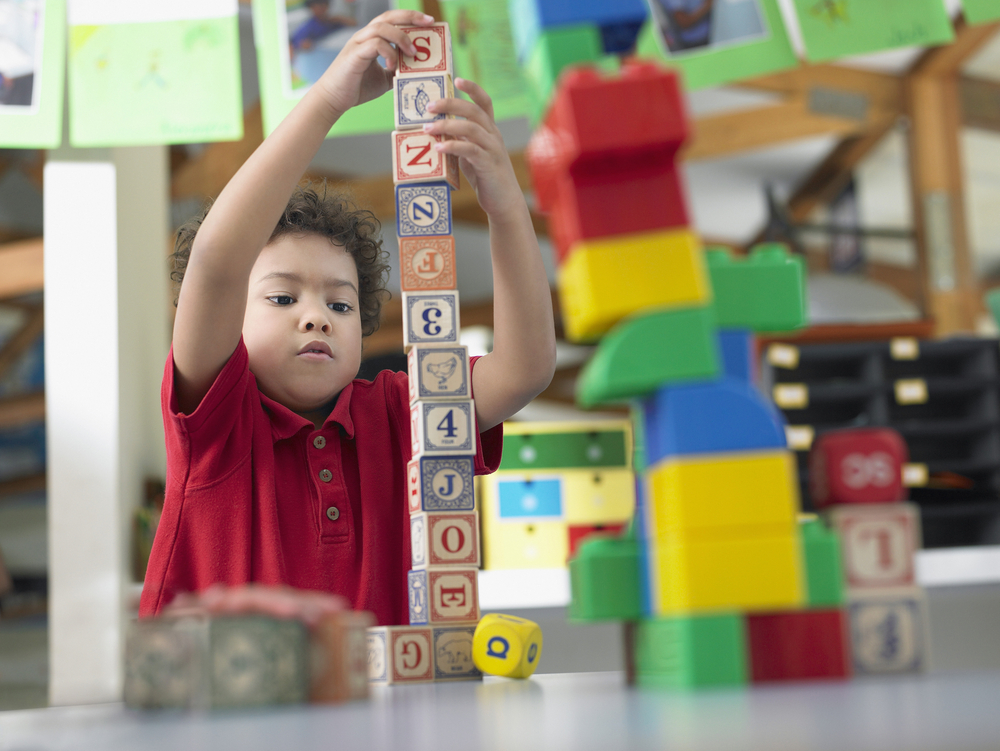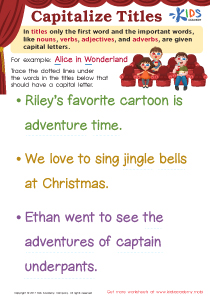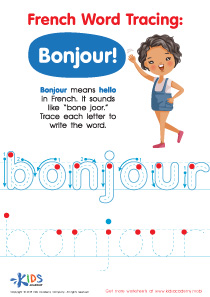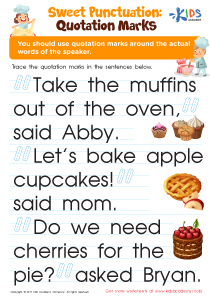Understanding plurals Extra Challenge Writing Worksheets for Ages 3-7
5 filtered results
-
From - To
Explore the "Understanding Plurals Extra Challenge Writing Worksheets for Ages 3-7" designed to enhance early literacy skills through engaging activities. These worksheets provide children with the opportunity to learn the concept of plurals in a fun and interactive way. With colorful illustrations and relatable contexts, young learners will practice transforming singular nouns into their plural forms, reinforcing their comprehension of basic grammar rules. Ideal for classroom settings or at-home learning, these extra challenges encourage creative writing and strengthen fine motor skills as kids engage with various writing prompts. Foster a strong grammatical foundation in your child today!
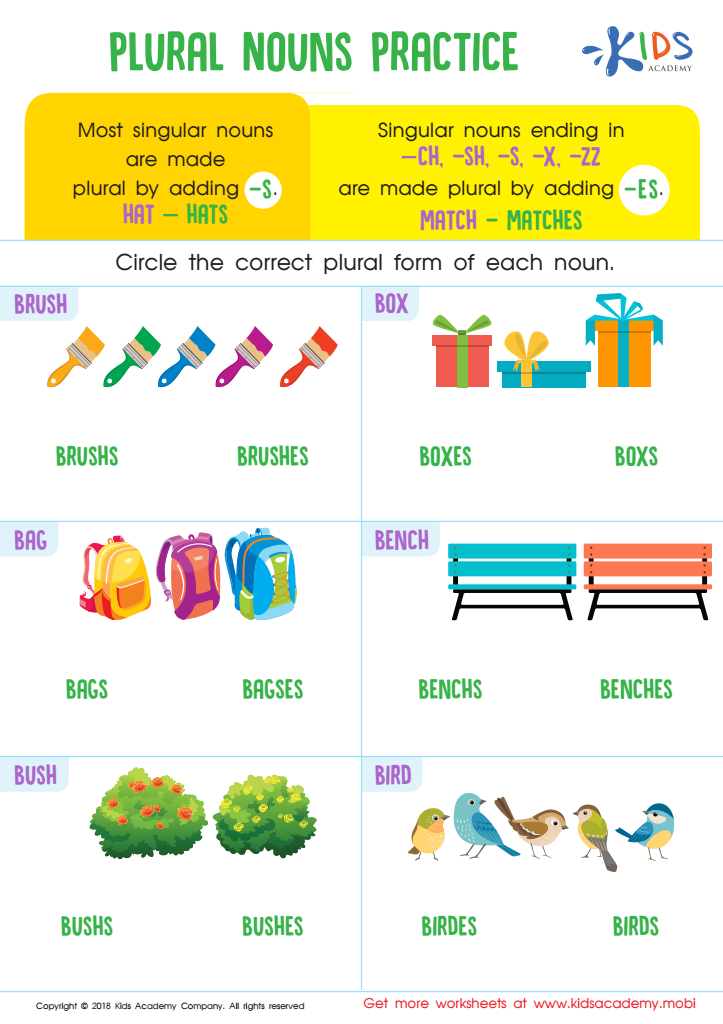

Plural Nouns Practice Worksheet


Plural Endings Maze Worksheet
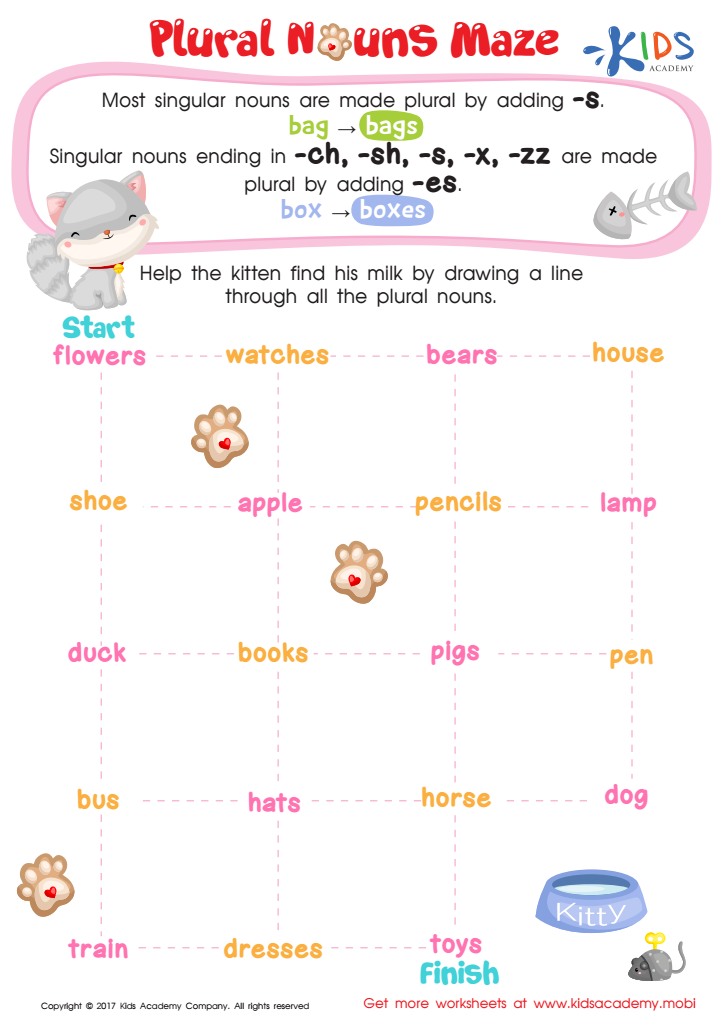

Plural Nouns Maze Worksheet
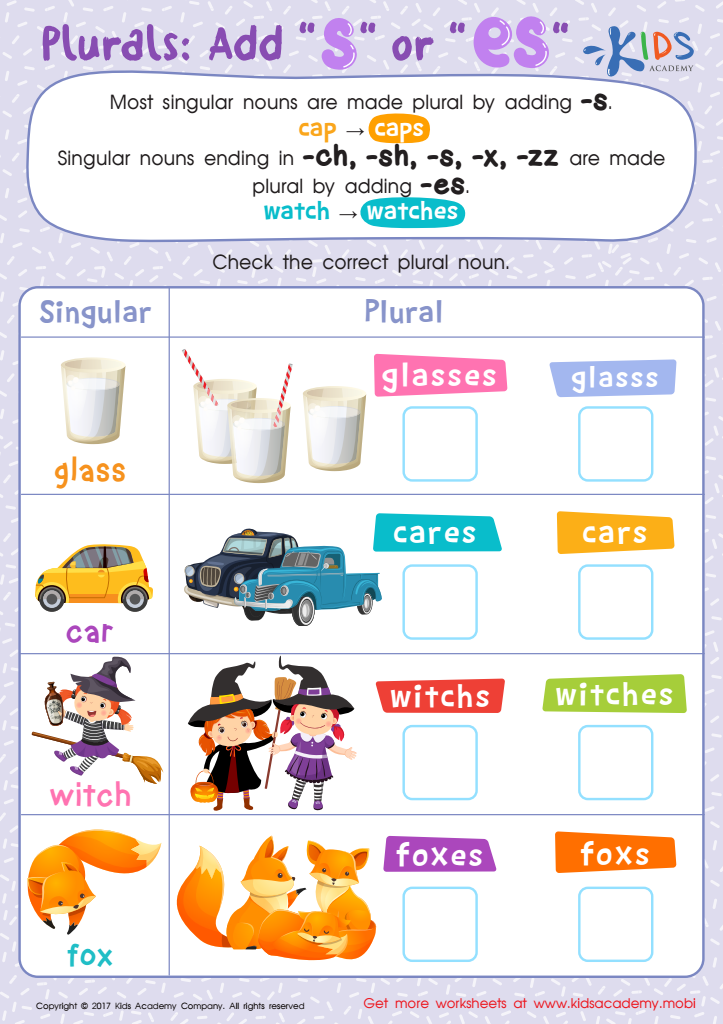

Plurals: "–es" or "–es"? Worksheet
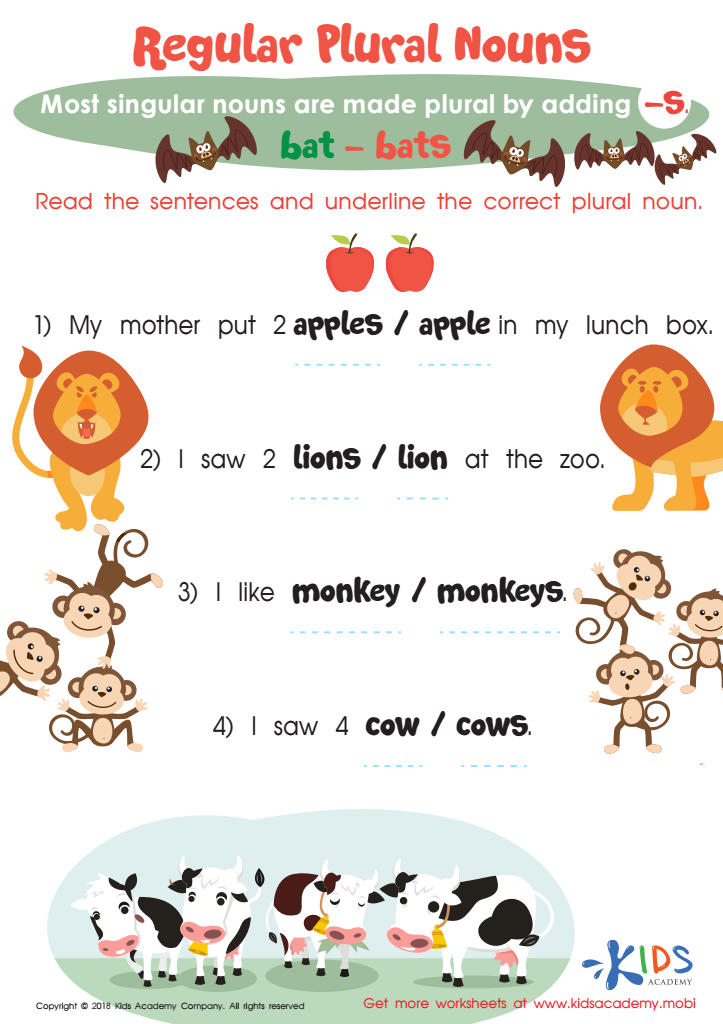

Regular Plural Nouns Worksheet
Understanding plurals is essential for young learners aged 3-7 as it forms the foundation for effective communication and language development. When children grasp the concept of plurals, they learn to differentiate between one and many, helping them articulate their thoughts more clearly. This skill enhances their vocabulary and enriches their sentence structures, enabling them to express complex ideas as they progress in their literacy journey.
Parents and teachers should care about this because early exposure to plurals fosters a love for language and reading, building confidence in young children as they begin to write. Engaging with plural forms in fun and relatable ways, such as through stories, songs, and interactive activities, keeps kids motivated and enthusiastic about learning. This foundational knowledge also supports their academic growth in later grades, where language skills become increasingly significant.
Moreover, understanding plurals helps children make sense of the world around them. By recognizing different quantities, they develop critical thinking and problem-solving skills. Overall, a strong grasp of plurals not only enhances language ability but also contributes to children's overall cognitive and social development, making it a vital focus for parents and educators alike.
 Assign to My Students
Assign to My Students





